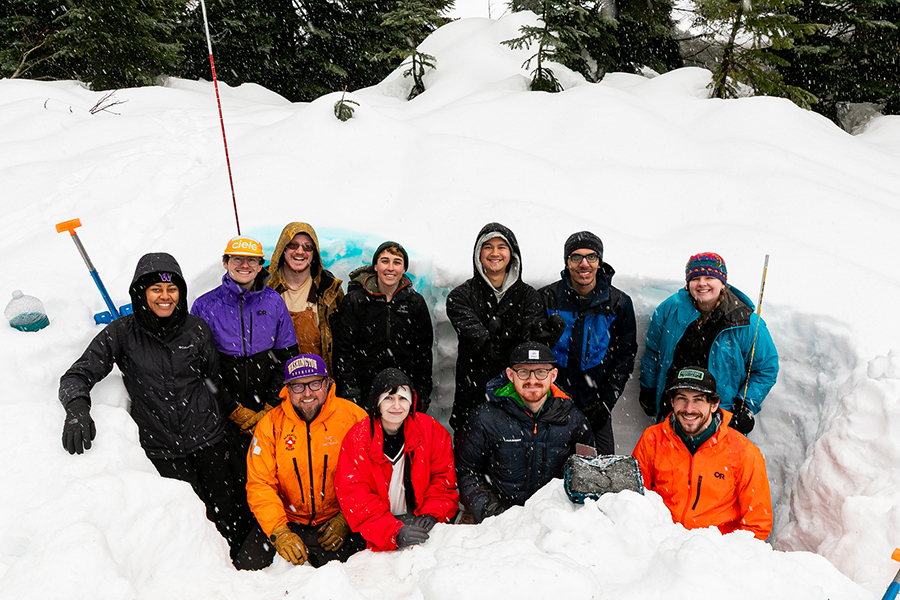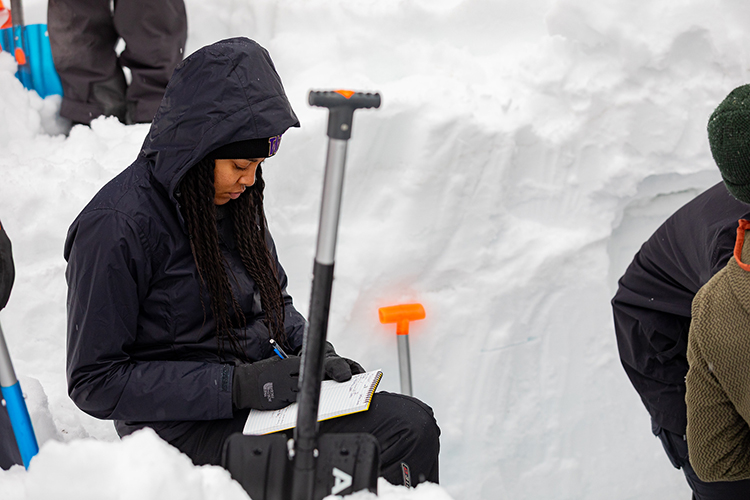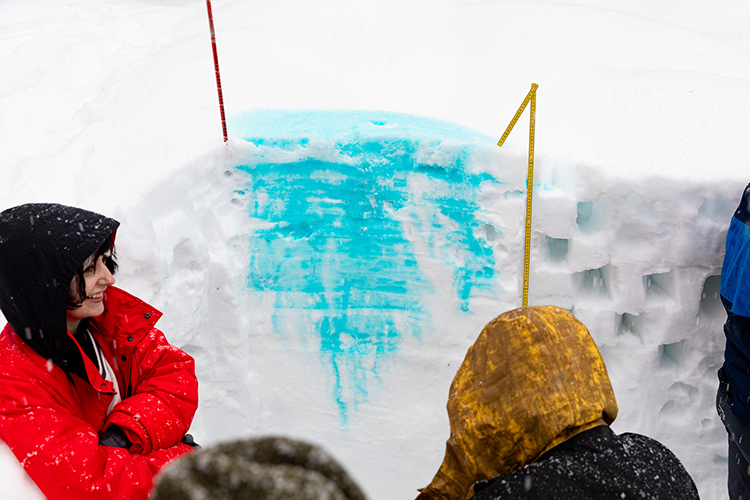By Julia Davis
Photos by Jorge Azpeitia / University of Washington
Snow hydrology class visits Snoqualmie Pass to dig snow pits, take measurements and learn in the field.

Snow Hydrology students pose together in and around a snow pit at Snoqualmie Pass, surrounded by deep snow.
There’s no better way to understand snow science than to dig right into it.
In late February, students in the CEE’s Snow Hydrology course left the classroom behind for a day of fieldwork at Snoqualmie Pass, about 50 miles east of Seattle. Led by graduate student Eli Schwat, who teaches the course with guidance from Professor Jessica Lundquist, the outing brought students face-to-face with the field techniques behind the data they spent the quarter analyzing.

Graduate student Jaxx Leshay Smith records measurements of the snow conditions.
The course, open to graduate students and upper-level undergraduates, blends snow physics, hydrology and atmospheric science with modern data tools like Python. But while the curriculum is data-heavy, the field trip offered something harder to replicate in the classroom: the chance to dig into the snowpack and apply what they’d learned.
The day kicked off with a site tour led by John Stimberis, a UW alum and avalanche forecaster for the Washington State Department of Transportation. Stimberis, who manages avalanche risk and road closures on the pass, shared how snow measurements directly inform public safety decisions.
“It’s really awesome to hear John talk about the actual usefulness of these kinds of measurements,” Schwat says. “His team is out there digging these pits and then applying it to the safety of people crossing over Snoqualmie Pass. It makes the class feel less theoretical.”

Students observe how dyed water moves through the snowpack to visualize infiltration patterns.
Then came the hands-on work. Armed with shovels, thermometers and snow sampling tools, students dug snow pits and collected detailed measurements. They recorded vertical temperature profiles, used density cutters to examine snowpack structure and studied crystals through magnifying lenses, replicating the same methods researchers use to track water content and snowpack stability.
“There is a lot of physical exertion in digging a big hole in very wet, heavy snow,” Schwat says. “But the students really have a good time and get to know each other a little better through the experience.”
Originally published April 21, 2025